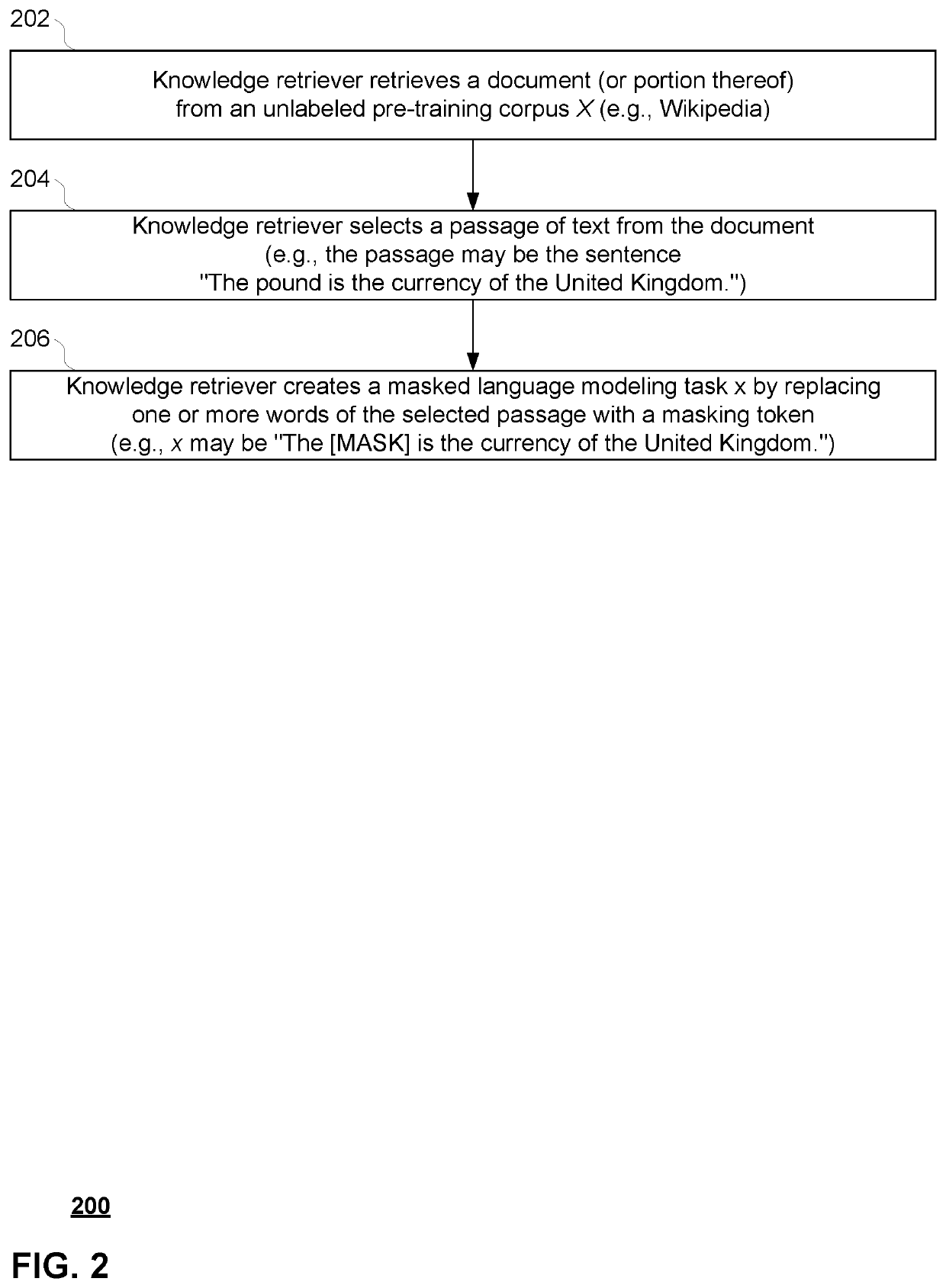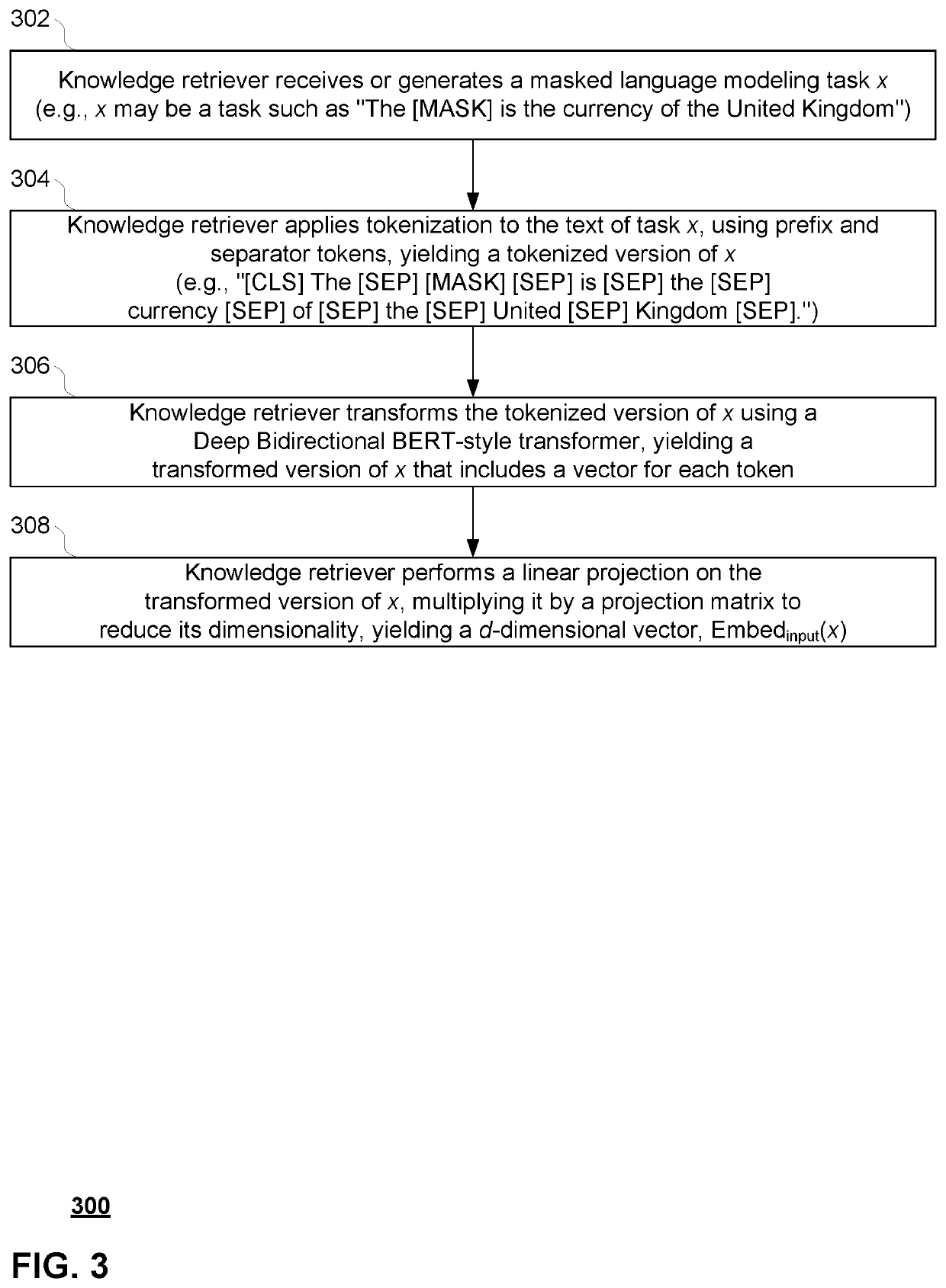Retrieval-augmented language model pre-training and fine-tuning
a neural network and language model technology, applied in the field of system and method for pretraining and fine tuning of neural networkbased language models, can solve the problems of significantly increasing network size and adversely affecting system operation, and achieve the effect of reducing storage space and complexity of neural network and effectively handling
- Summary
- Abstract
- Description
- Claims
- Application Information
AI Technical Summary
Benefits of technology
Problems solved by technology
Method used
Image
Examples
Embodiment Construction
[0025]The present technology will now be described with respect to the following exemplary systems and methods.
Example Systems
[0026]FIG. 1 schematically illustrates an arrangement 100 with an exemplary processing system 102 for performing the methods described herein. The processing system 102 may include one or more processors 104 and memory 106 storing instructions and data. In addition, the instructions and data may include the language model and knowledge retriever described herein. The processing system 102 is shown as a computing device which is in communication with various websites, including websites 110 and 118, over one or more networks 108. Exemplary websites 110 and 118 each include one or more servers 112a-112n and 120a-n, respectively. Each of the servers 112a-112n and 120a-n may have one or more processors (e.g., 114 and 122), and associated memory (e.g., 116 and 124) storing instructions and data, including the HTML of one or more webpages. The pre-training corpus X...
PUM
 Login to View More
Login to View More Abstract
Description
Claims
Application Information
 Login to View More
Login to View More - R&D
- Intellectual Property
- Life Sciences
- Materials
- Tech Scout
- Unparalleled Data Quality
- Higher Quality Content
- 60% Fewer Hallucinations
Browse by: Latest US Patents, China's latest patents, Technical Efficacy Thesaurus, Application Domain, Technology Topic, Popular Technical Reports.
© 2025 PatSnap. All rights reserved.Legal|Privacy policy|Modern Slavery Act Transparency Statement|Sitemap|About US| Contact US: help@patsnap.com



